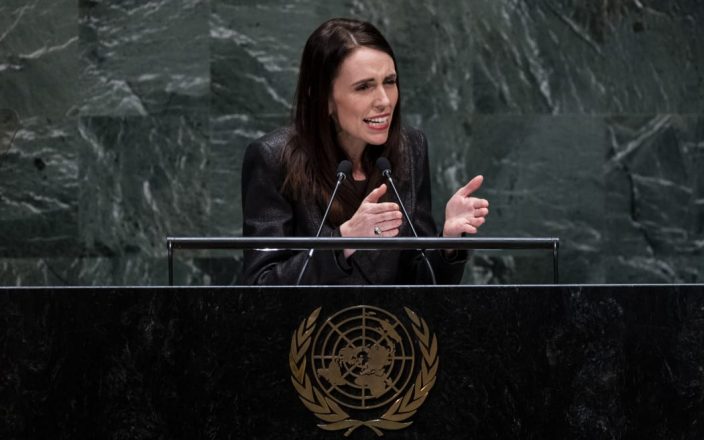ジャシンダ・アーダーン首相は、ニュージーランドは核不拡散に向けた国際的な取り組みにおいて重要な役割を担っていると述べています。
アーダーン首相は、先週ニューヨークで開かれた国連総会で演説し、ウクライナにおけるロシアの行動を非難し、すべての核兵器を完全に禁止するよう訴えました。
国連での演説の後、メディアの取材に応じたアーダーン首相は、ロシアのウクライナでの戦争にニュージーランドが強く反対していることを改めて表明することが重要だと述べました。
「ニュージーランドは、核不拡散のような問題に断固とした姿勢で臨むことで長い間高い評価を得てきました。私としては、ニュージーランドを代表して、この継続的な反対を改めて表明することが非常に重要です。」
「そんな議論も、何年か経つと脇道にそれてしまうことがありますが、しかし、今週になっても、核兵器を保有する指導者の脅威を目の当たりにしています。そして今、ニュージーランドが核兵器に対する強い決意を改めて表明することが、これまで以上に重要であると考えています。」
アーダーン首相は、核兵器をなくす代わりに、相互確証破壊の概念が世界をより安全な場所にすると仮定することだと述べました。
「そのような戦略によって、誰かがより安全になるとは思えません。しかし、簡単なことでありませんが、私たちは常に、核兵器がない方が世界はより良くなると考えています。
「私たちにとっては、核兵器禁止条約が重要であり、その条約と声明を支持するコミュニティを拡大するために、他の締約国に少なくともその取り組みのオブザーバーになるよう勧めてきました。
「ロシアの立場は、なぜ世界がコンセンサスに向かい、最終的には核兵器の完全な撤去に向けて努力し続ける必要があるのかを示しています。」
アーダーン首相はまた、ニュージーランドが近々ロシア大使を追放するという提言には乗り気ではなく、制裁措置の方がはるかに意味があると述べました。
画像出典:AFP




























































